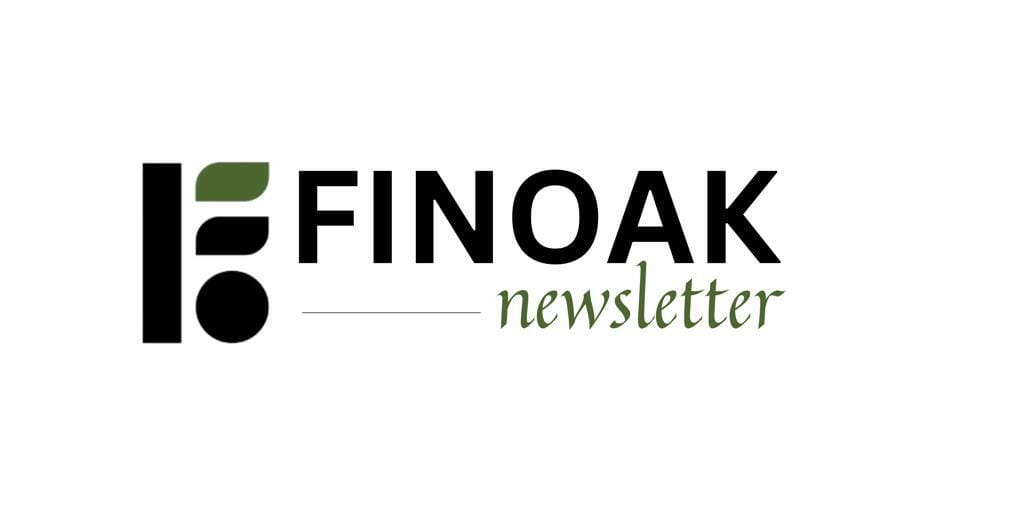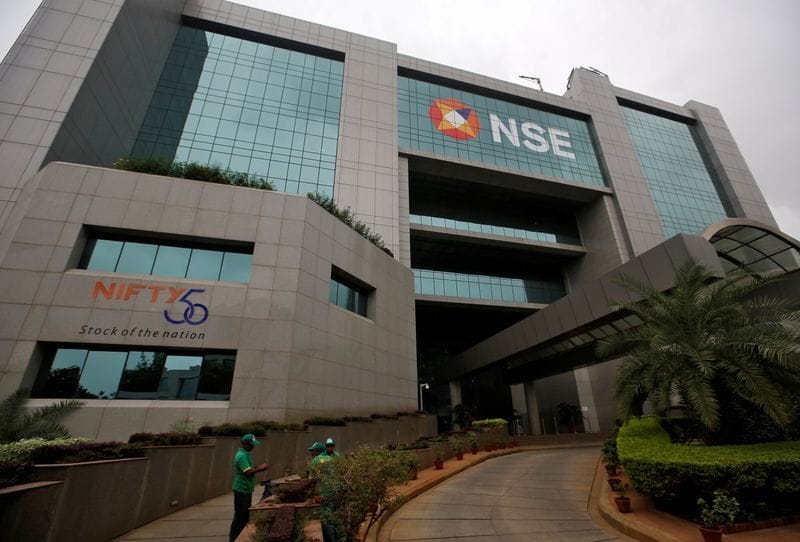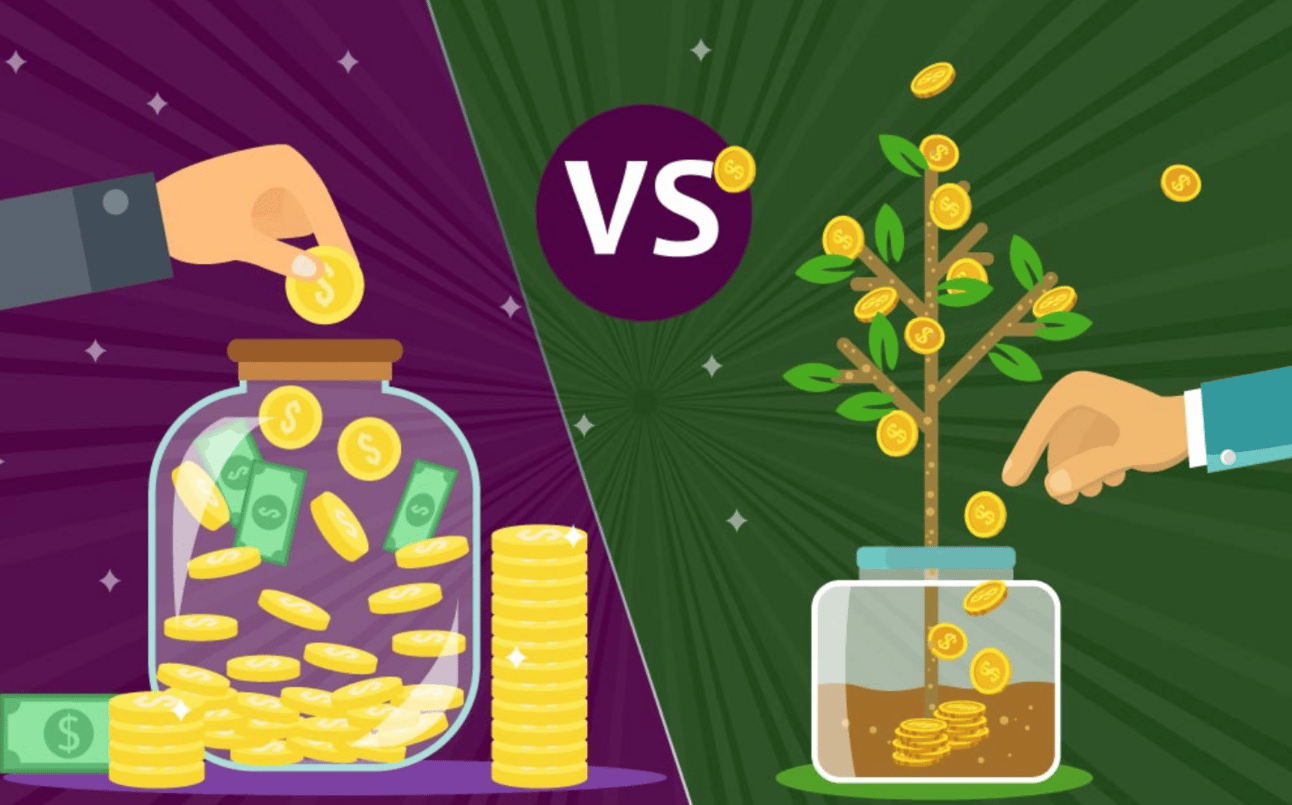- The FinOak
- Posts
- NSE Indices Undergo Transformation: HDFC Out, LTIMindtree and JSPL In
NSE Indices Undergo Transformation: HDFC Out, LTIMindtree and JSPL In

Welcome, FinOak fam! How’s the middle day of the week treating you 😉 ? We bring you another electrifying edition, brace yourselves as we take you through the the recent updates, starting with Apple’s plans to launch a new credit card in India and replacement of HDFC from indices with LTI Mindtree and JSPL post merger. Moving on, read about saving vs investment approach while managing your finances and to also see which approach aligns with you most given the circumstances. Lastly, read about the inspiring journey of Anushka Kumar, who is an incoming Master’s student at the University of Chicago and the co-founder of Project USPAS, which works to bridge the gap in fields of research in Psychology and Allied Sciences and provide opportunities to historically underrepresented students.
Note: Please move this email to your primary inbox so that you don’t miss out on any update ;)
Column 1
Weekly Wrap Up
In This Edition:
1. APPLE planning to launch Credit Card in India with HDFC
2. NSE Indices Undergo Transformation: HDFC Out, LTIMindtree and JSPL In
APPLE planning to launch Credit Card in India with HDFC

“An apple a day keeps the doctor away!”
Well, not that apple! 🍎
Apple Inc. is currently engaged in discussions with HDFC Bank and regulators to introduce a credit card in India, as reported by Moneycontrol. During his visit to India in April, Apple CEO Tim Cook met with HDFC Bank's CEO and MD, Sashidhar Jagdishan, to explore this possibility.
The report indicates that Apple is in talks with the Reserve Bank of India (RBI) to work out the specifics of the credit card. However, the RBI has advised Apple to follow the regular procedure for co-branded credit cards, without any special considerations.
Apple's objective is to introduce a credit card co-branded with HDFC Bank in India, with a desire for significant deviations from the standard co-branded credit card model. Nevertheless, there are uncertainties surrounding whether HDFC Bank would agree to these deviations, and Apple may need to make compromises to proceed.
It's important to note that the decision to launch the credit card in India is still under discussion, and no final conclusion has been reached yet. According to a source, Apple prefers to collaborate with major partners like HDFC Bank, which could lead to better terms for the partnership.
Additionally, reports are indicating that Apple is working on a localized version of Apple Pay, which would integrate with the Unified Payments Interface (UPI) in India. The company aims to enable iPhone users to initiate UPI transactions by simply scanning QR codes, without requiring the download of any third-party payment service provider app. Apple has even suggested the potential use of Face ID for UPI authentication on iPhones.
In recent times, Apple has been keen on investing in and manufacturing products in India, seeking to reduce its reliance on China due to geopolitical tensions between the US and China. The company has already opened two physical stores in India, namely Apple BKC in Mumbai and Apple Saket in New Delhi. Furthermore, Apple has significantly increased its iPhone production in India, with output reaching $7 billion in FY23, partly influenced by the Indian government's incentives to boost local manufacturing. This shift in manufacturing has attracted both Apple and its contract manufacturers like Foxconn Technology Group and Pegatron Corp.
NSE Indices Undergo Transformation: HDFC Out, LTIMindtree and JSPL In

The NSE (National Stock Exchange) has announced changes in its indices following the merger of HDFC Bank. Effective from July 13, 2023, HDFC will be replaced by LTIMindtree on the mainboard Nifty 50, which consists of 50 large-cap stocks. This change will also apply to the Nifty50 Equal Weight Index. Additionally, several other indices, including Nifty Financial Services, Nifty 200, Nifty 500, and Services Sectors, will see replacements for HDFC.
In an official notification, the NSE stated that the Index Maintenance Sub-Committee of NSE Indices Limited has decided to make these replacements due to the amalgamation of Housing Development Finance Corporation (HDFC) with HDFC Bank. The changes will come into effect on July 13, 2023, after the close of trading on July 12, 2023.
The Nifty 50, considered a major benchmark on the NSE, will welcome LTIMindtree as the replacement for HDFC. This change will also impact the Nifty50 Equal Weight Index. LTIMindtree will also take the place of HDFC on the Nifty Services Sector index.
In addition to the above changes, Jindal Steel & Power (JSPL), a prominent player in the metal industry, will replace HDFC on the Nifty 100 index and the Nifty100 Equal Weight index.
Further adjustments will be seen in the Nifty Next 50 index, where LTIMindtree will be replaced by JSPL following its entry into the Nifty 50. Mankind Pharma will replace HDFC on various indices, including Nifty 500, Nifty 200, Nifty LargeMidcap 250, and Nifty Total Market.
Regarding sectoral indices, LIC Housing Finance will replace HDFC on the Nifty Financial Services index, affecting the Nifty Financial Services 25/50 index. Other replacements include Poonawalla Fincorp on the Nifty Financial Services Ex-Bank index, Phoenix Mills on the Nifty Housing index, Brigade Enterprises on the Nifty Core Housing index, and Ambuja Cements on the Nifty High Beta 50 index.
Furthermore, HDFC will no longer be included in the environmental, social, and corporate governance (ESG) indices, such as Nifty100 ESG, Nifty100 Enhanced ESG, and Nifty100 ESG Sector Leaders.
Column 2
Personal Finance
In This Edition:
Saving vs. Investing: Which one is better for building a Strong Financial Foundation
Saving vs. Investing: Which one is better for building a Strong Financial Foundation

After realising that most of us at FinOak are no more just mere ‘college students’ but rather ‘working professionals’, the sudden need to ‘save’ or ‘invest’ caught our attention.
For early investors looking to build wealth and secure their financial future, understanding the differences between saving and investing is crucial. While both saving and investing are important financial practices, they serve distinct purposes and have different outcomes. In this blog, we will explore the key differences between saving and investing to help you make informed decisions about your money.
1. Purpose and Objectives:
Saving: Saving involves setting aside a portion of your income for short-term needs, emergencies, or specific goals. It provides a safety net and helps in managing day-to-day expenses, unexpected events, or planned expenses.
Investing: Investing, on the other hand, focuses on growing your wealth over the long term. It involves putting your money into assets such as stocks, bonds, real estate, or mutual funds with the aim of generating returns and capital appreciation.
2. Risk and Return:
Saving: Saving typically involves low to no risk, as it usually involves keeping money in a bank account or a low-risk instrument. While the returns from saving are modest, they are relatively stable and easily accessible.
Investing: Investing carries a higher level of risk as it involves exposure to market fluctuations. However, it also offers the potential for higher returns. Different investment options come with varying degrees of risk, and it is essential to assess your risk tolerance before investing.
3. Time Horizon:
Saving: Saving is generally suited for short-term goals or immediate needs. It is advisable to have a separate savings account for emergencies and short-term expenses. Saving helps you achieve financial stability and meet short-term financial goals.
Investing: Investing is a long-term commitment. It is suitable for goals that are several years away, such as retirement planning, buying a house, or funding your child's education. The longer your investment horizon, the more time your money has to grow and potentially generate higher returns.
4. Inflation and Wealth Preservation:
Saving: While saving helps preserve the value of your money, it may not keep pace with inflation in the long run. Inflation erodes the purchasing power of your savings over time.
Investing: Investing can help combat the effects of inflation by providing opportunities for your money to grow at a rate that outpaces inflation. It allows you to potentially accumulate wealth and achieve long-term financial goals.
5. Diversification and Asset Growth:
Saving: Saving does not offer the same level of diversification or growth potential as investing. The focus is on liquidity and stability rather than maximizing returns.
Investing: Investing provides opportunities for diversification across various asset classes, sectors, and geographies. By spreading your investments, you can reduce risk and potentially benefit from the growth of different assets.
While saving and investing both play important roles in financial planning, understanding the key differences is vital for early investors. Saving provides security, liquidity, and short-term stability, while investing offers the potential for long-term wealth accumulation and higher returns. Striking a balance between saving and investing, based on your financial goals, risk tolerance, and time horizon, is key to achieving financial success.
Would you like to join our team? Write to us on [email protected]!
Column 3
Featuring Future Leaders: Anushka Kumar
From LSR to Chicago: Making a mark in behavioural economics

Hi! I’m Anushka Kumar, an incoming Master’s student at the University of Chicago. I’ve been a Research Intern at the University of Cambridge, the London School of Economics and Political Science, and Ashoka University, and have also conducted my own research work as an Independent Researcher at Lady Shri Ram College, Delhi University.
I’m a Social Media Consultant at Behaven, a firm that applies Behavioral Economics to sustainability.
I’m the Co-founder of Project USPAS, which works to bridge the gap in fields of research in Psychology and Allied Sciences and provide opportunities to historically underrepresented students.
A mission that drives me is the belief that the best way to succeed is to help others succeed.
Tryst with Psychology and Behavioral Economics
In class 11, I opted for the humanities stream because Psychology, along with Economics, and Informatics Practices (Java and SQL) were subjects that I loved and wanted to explore further. Psychology fascinated me and as I learned more about the field, I realized that my interest was in the field of Social Psychology – the study of how thoughts, feelings, and behaviors of a society and an individual interact and affect each other.
During my undergraduate studies at Lady Shri Ram College, I further explored fields like Behavioral Economics, Applied Social Psychology, and Community Psychology, and all of this helped me narrow down my interest. That being said, my current field of interest, Behavioral Economics, is eclectic in scope and has a host of real-world applications across industry, social sector, and academia.
Exploring the World of Research
One thing that helped my master’s application stand out was going for a lot of quality research internships and independent research projects – both in India and abroad. I’ll cover some of them here.
Independent Research Project at Lady Shri Ram College
At LSR, we have a group called the Independent Research Platform under the Research Circle, a research-focused club of which I was the head. The procedure of getting a supervisor involves submitting a detailed research proposal, which if accepted, lets you co-author the research with the professor.
One way to go about getting such opportunities is to cold email professors at your own university, and provide a detailed and extensive draft of your research proposal as proof to the professor that you are capable of dealing with the rigor that research requires.
Another way would be to email professors who are not from your home college/university. That being said, it is unlikely that professors who do not have any experience with you would be willing to work on a research project with you. What I would recommend in such situations would be to reach out for a research internship, and when drafting your cold email for this, request the professor that if they like your work for the next 6 months or so, they take you on for an independent research project.
Ghosh Research Group
I was also part of the Ghosh Research Group at Ashoka University, Sonepat and worked on Social Psychology projects. I got the opportunity by going to the website of the lab, getting the professor’s email ID from there and cold emailing them. Drafting an effective and engaging cold email is essential to get coveted opportunities, and I’ve given some tips later on how to go about the process.
I mainly worked on qualitative research projects, and my responsibilities involved data collection through one-on-one interviews, and data analysis using Boyatzis thematic analysis.
University of Cambridge and London School of Economics and Political Science
While my projects at Ashoka and LSR impacted my academic resume in a positive manner, what really helped me become a competitive candidate for my Master's were my research internships with the University of Cambridge and the London School of Economics and Political Science.
When applying to universities abroad for research internships, it is essential to approach the process in a structured manner.
The first thing one needs to do is to clearly define their research interest: decide which area you wish to work in. It’s okay if your research area is broad. You just need to have at least a preliminary idea of what you want to do.
After that, I recommend looking at an international ranking of universities (I used the Times Higher Education ranking) and selecting which colleges/universities you want to apply for.
After that, go to the website of the chosen department of the respective university, look at the list of faculty, and get the email ids of those faculty members whose research area and interest match yours.
Then, the next step would be to tabulate all of this information in a detailed spreadsheet, with columns like ‘Professor, University, Research Interest, Date you reached out, data of follow up, response, status’ etc.
Note that you will have to apply to a lot of labs and professors and you will face a lot of rejections. You’ll get tens of rejections before one yes.
The cold email
The most essential part of this process is the cold email. Writing cold emails is not something often talked about or taught in schools or colleges, but it is something that can make or break your application.
An effective cold email requires four specific parts:
1) It begins with a brief introduction (Who are you?)
2) Then you proceed to describe your interest in the organization (Which projects of the organization interest you?)
3) Further, you write about your experience and skills (How would you be able to help the organization and how does your previous work experience relate to the organization's work?)
4) Lastly, you mention a Call to Action (What further steps do you want the organization to take with regards to a collaboration with you?). It's best to request the organization for a short online meeting to discuss potential internship opportunities.
From Delhi to Chicago: My Master’s Application Journey
Planning Ahead
It’s essential to plan ahead and start the application process as soon as possible. For example, I had earlier planned to apply for Masters in Psychology, Psychological Research, Social Psychology, and Behavioral Economics. But as I went about the process, I realized my true area of interest was Behavioral Economics and so I applied to those programs only. Here’s an ideal timeline to follow for your higher education journey:
AT LEAST 18 MONTHS BEFORE:
Begin shortlisting programs and universities. Some factors to consider are research fit, funding, location, reputation, support services, and experiences of current students in that program/lab
Begin emailing professors enquiring if they’re taking graduate students next year.
Begin developing your profile to make your application more competitive. Make sure your profile meets all the eligibility requirements for different programs.
AT LEAST 12 MONTHS BEFORE:
Begin preparing for the standardized tests you have to take such as GRE/GMAT/TOEFL/IELTS, etc.
Keep in mind that you might have to give these tests two or three times to get a competitive score
AT LEAST 8 MONTHS BEFORE:
Take the standardized tests. Take them again if the need arises.
Speak to your recommenders who will be providing you with letters of recommendation, inform them of the programs and universities you’re applying to and send them a working draft of your SOP, and any other material they may ask.
Begin writing your SOP, getting feedback, and incorporating feedback
Begin preparing your academic CV
AT LEAST 2 MONTHS BEFORE:
Remind recommenders to submit the letter
Ensure that all the material (transcripts, letters, etc.) has been submitted
Apply to the programs and hope for the best :)
Once you get offers, begin preparing for interviews
If you want to resources such as sample cold-email, acing standardized tests, drafting the perfect SOP, and high-quality sample academic CVs, check out my LinkedIn (link at the end)
How to Draft a Cogent Statement of Purpose (SOP)
In my opinion, a Statement of Purpose (SOP) is the most important part of an application. A strong SOP can make even “mediocre” experiences (as considered by universities abroad) to be exceptional, and a weak SOP can make even the most outstanding of experiences seem insignificant.
This is the structure of an SOP:
1. Begin with a personalized origin story, most often a life experience connected with the subject, and eventually, the program.
2. Talk about why you are a good fit for the program – Why should they choose you? What do you bring to the table? What differentiates you from other applicants?
3. Mention why you want to be a part of this program and university – is it a particular pedagogy, a professor you want to learn from, a course, etc?
4. Propose a hypothetical research idea (potential thesis idea) to demonstrate your analytical and critical thinking skills.
5. Lastly, write how this program will fit with your long-term plans and career goals.
Project USPAS: Underrepresented Students in Psychology and Allied Sciences
Project USPAS is a venture that I co-founded with my friend Nikita Ghodke, who has been a research assistant at the University of Harvard, University of Cambridge, NYU, UCLA, IIT, and Ashoka University.
During our research journey, we noticed the huge gap in resources, knowledge, awareness, accessibility, and mentorship between students from developed countries and from developing countries. While there are some excellent higher education mentorship programs such as Project Short or Científico Latino, they don’t have a lot of mentors from developing countries. This is the gap we work towards bridging. Our mission statement is ‘for the underrepresented, by the underrepresented,’.
Another factor that motivated me to start Project USPAS was my experience at the placement cell at LSR. During my time there, internship opportunities were mailed to us frequently. However, the opportunities were primarily corporate in nature, and there was a dearth of research-related opportunities, especially research in academia. This is another gap USPAS works towards bridging.
Currently, we focus on Psychology and allied sciences such as Economics, Sociology, Public Policy, Political Science, etc. We’ve set up a Google group where we share research opportunities with leading institutions in academia, industry and the social sector.
You can join their Google group at https://groups.google.com/u/0/g/project-uspas. Once you have clicked the link, click on 'Join Group'.
Their mentorship program soon so be out, be on the lookout for it on their LinkedIn, Twitter, and website!
Societies, and avoiding Self-Rejection
One thing I’ve observed a lot in my friends and mentees is that they often hesitate to apply to research opportunities or societies due to self-rejection. They think they aren’t good enough or that others are more qualified than them.
As James Clear said, “Sometimes we avoid taking action because we feel that we need to learn more. But often, the best way to learn more is by taking action.” I applied to a lot of college societies and didn’t get in and that’s okay because I did my best.
I focused on my efforts and not on the outcome. If I did my best and got selected, that's very good. If I did my best and did not get selected, that's not bad - it's a good learning experience. But, if I did not do my best and did not get selected, then that is a problem for me. I just need to do my best.
Winning the LinkedIn Game
Let me begin with my personal experience of how LinkedIn helped me. My first post was about self-rejection. Through that post, I just wanted to get my thoughts out there and encourage people to apply for opportunities even if they don't have a lot of research experience.
My goal was not self-promotion or marketing or growth, and it still isn’t. As I always say, efforts over outcome. When my first post got more than 700 likes, it was overwhelming haha.
I bagged roles as a Social Media Consultant at two Behavioral Economics firms - Behaven, and Centre for Social and Behaviour Change by cold messaging the founders of these firms.
When I applied for these consultant roles, my posts on LinkedIn acted as a digital portfolio and provided employers with a chance to appraise the quality of my work.
LinkedIn also provided me with a loving community to whom I have been providing one-on-one mentoring sessions on Topmate, which serves as a side income stream. If anyone wishes to get exclusive one-on-one mentoring sessions, they can get my Topmate link from my LinkedIn.
Parting Words
I would say that it is important for you to explore different avenues and seize different opportunities so you can get an idea of what you want to do. Being curious is essential.
Secondly, in Behavioral Economics, we are taught the concept of cognitive biases, such as self-rejection. Be aware of these biases and learn how to outsmart them.
Give your best at everything that comes your way – you never know what might work!
Explore, fail, learn, grow, and never hesitate to put yourself out there.
And that’s about it. If you have any questions about my journey, need any help with breaking into research, or just want to chat, feel free to reach out to me on Twitter. I’ll be happy to help. Until then, I wish you the best!
This will be all for this week, see you next week :)
Team FinOak